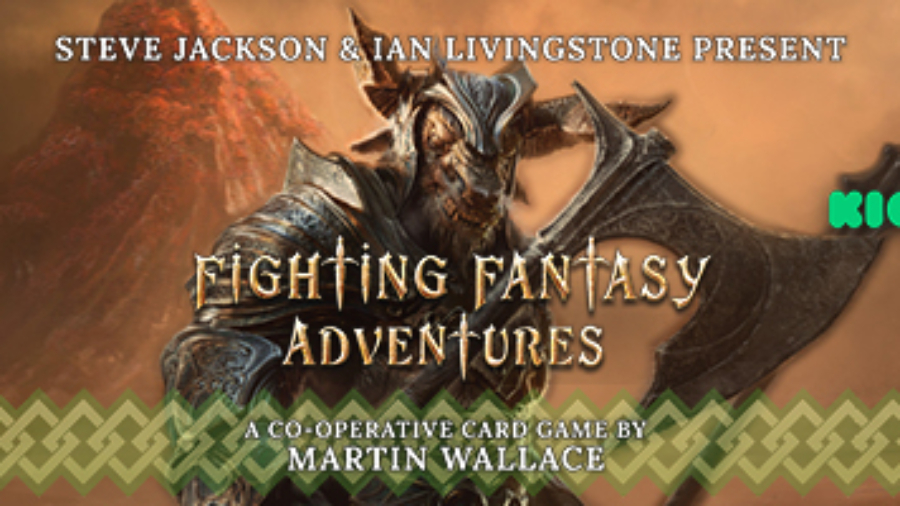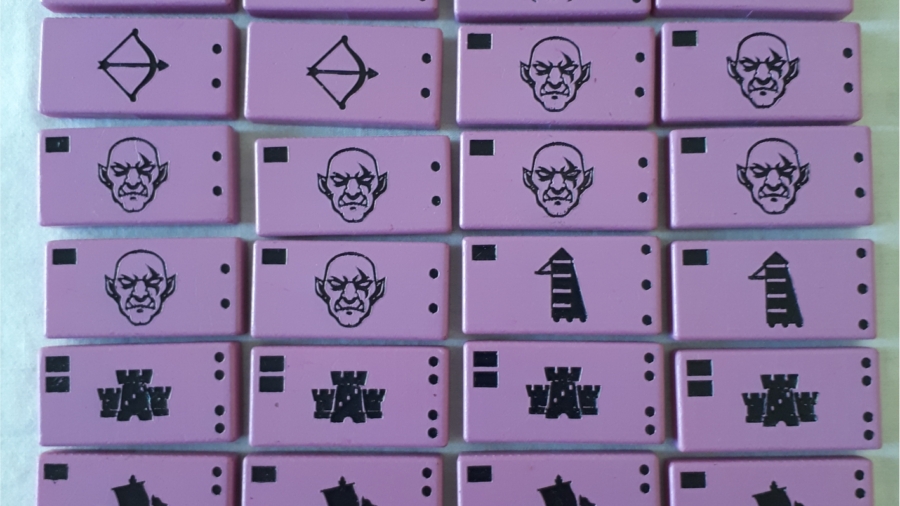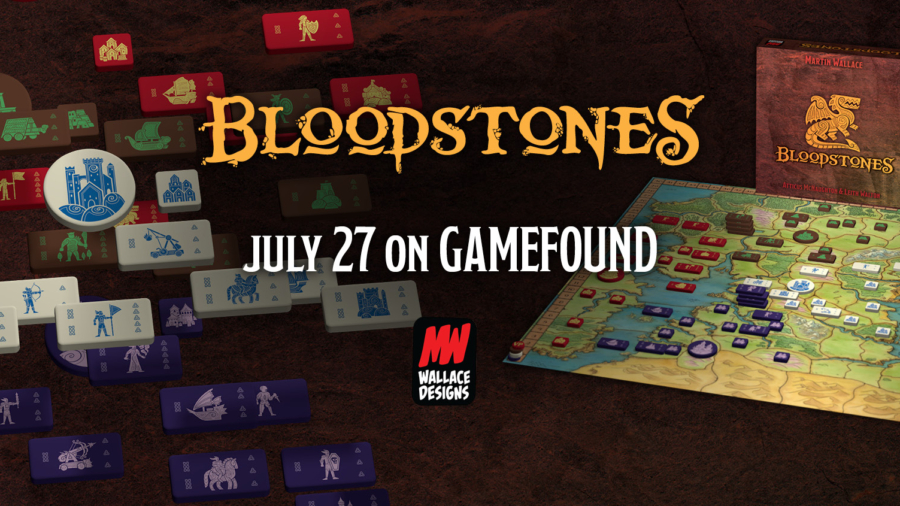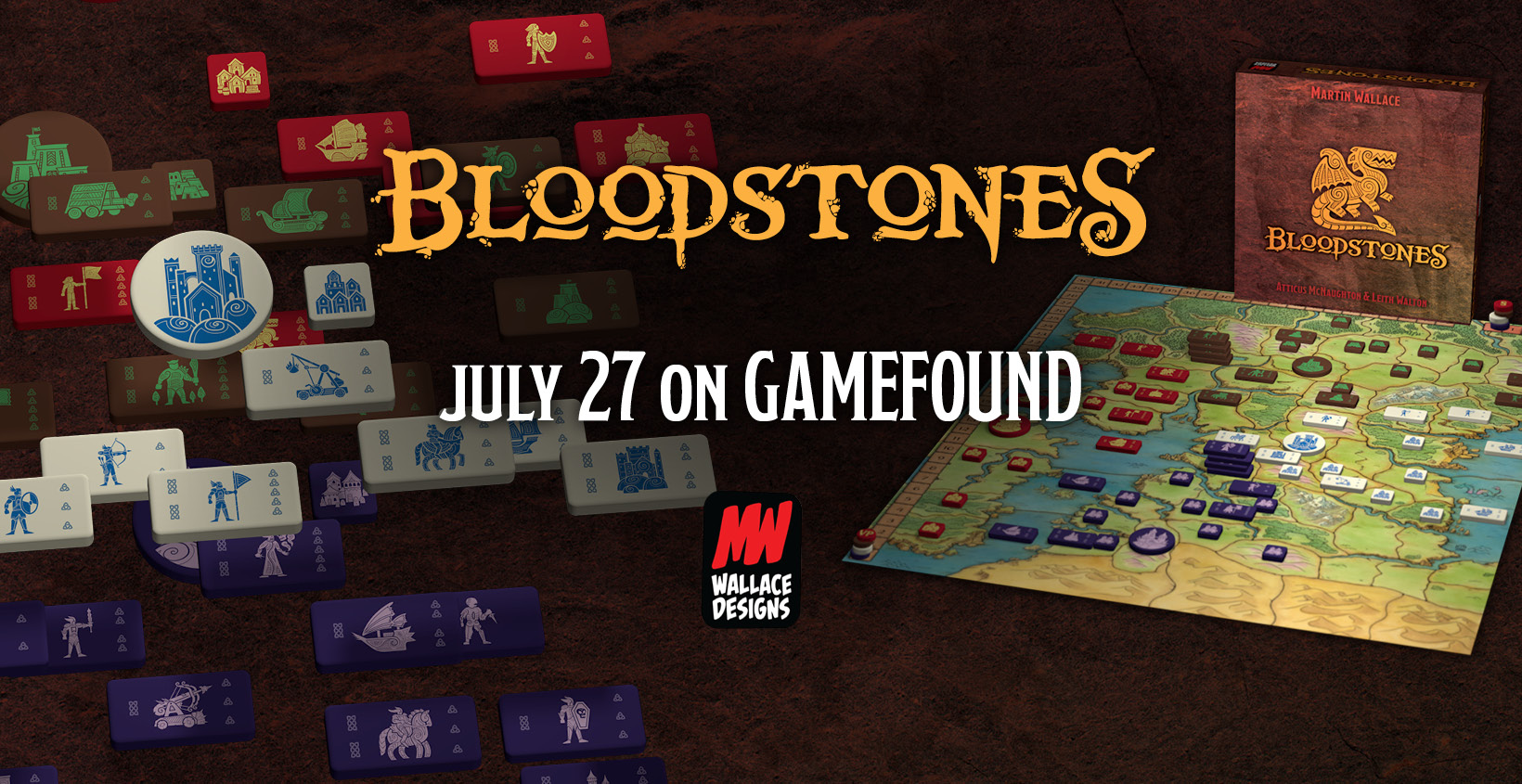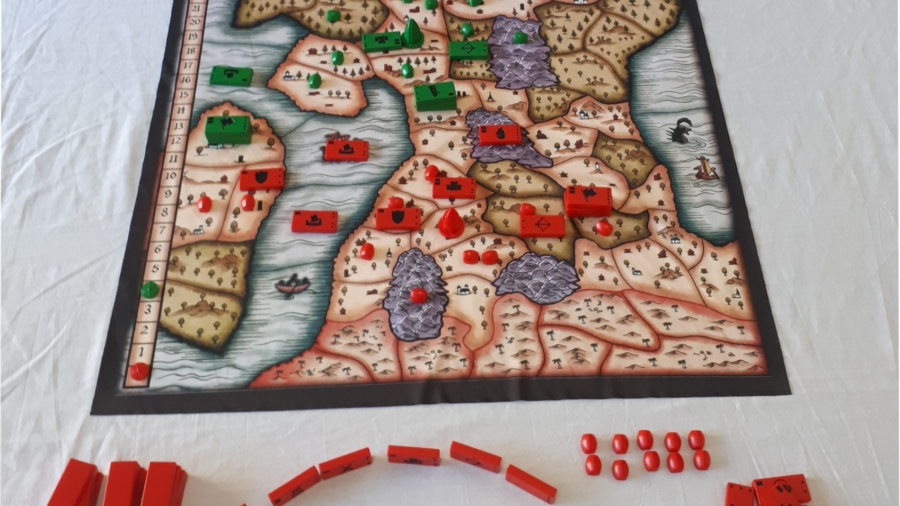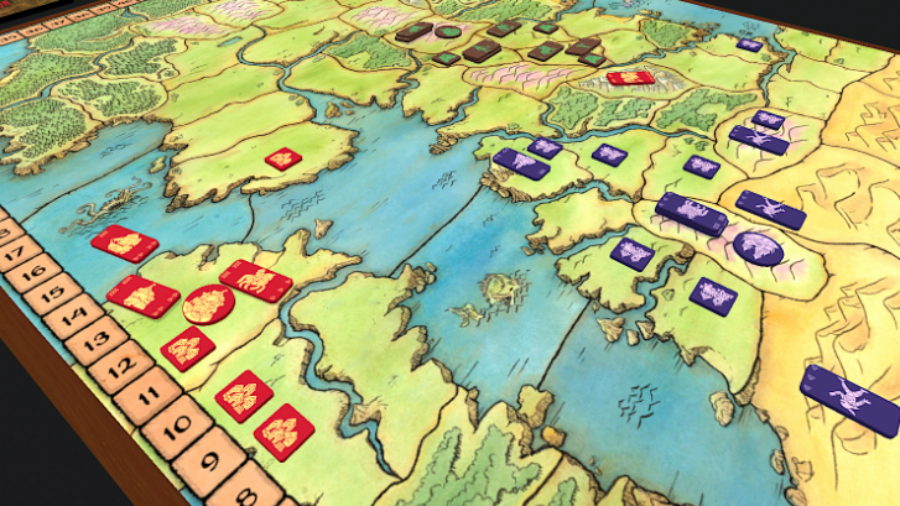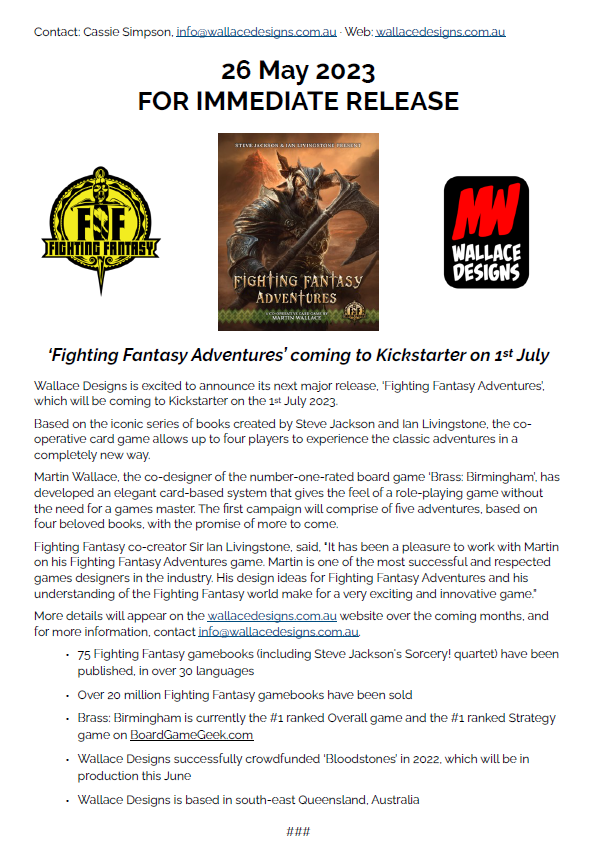
Designer Diary – Part Four: The Auckland Connection
I started to make contact with gamers in Auckland, which is how I met up with Amanda Milne and Julia Schiller, who had a company called SchilMil. During the summer months I could get on a ferry from Coromandel to Auckland, which was just the most amazing way to get to the city. I remember one ferry slowing down so that the local pod of Orcas could say hello. I also ran a game design weekend in Coromandel, ‘Coracon’ which led to me meeting a lot of fellow gamers and aspiring designers. With more testing the game was taking shape.
I started with four factions, the Dragon Riders, Horse Lords, Hill Folk and Mages. The Dragon Riders have dragons, which are essentially your one-use nuclear weapon. The Horse Lords are your “boring” human-types, who have a larger hand size and an extra leader. The Hill Folk have giants, who are both good in battle and can build castles. The Mages were meant to be the magic-users, but they became the most problematic of the factions. They started with a range of spells that they could use but eventually I converted them to the Necromancers, who can raise an army of zombies by killing enemy units. The first map was based on Europe, but that then got binned as there was too much of a disconnect between playing with fantasy units on a familiar real-world map.
Each faction had its own set of pieces. A lot of the unit types were common across all four factions, but the numbers of each would vary. Thus the Horse Lords have more cavalry than other factions, while the Hill Folk have more castles.
Then we moved, again. We were renting a house in Coromandel and the owners decided they wanted to sell the property. I forgot to mention that we took five cats with us when we moved from the UK to NZ. It’s not easy finding a rental with that number of pets. We ended up moving to a house in the Bay of Plenty, near Waihi. The closest city was Tauranga, where I already knew a number of gamers. Before I had moved to NZ I had made the acquaintance of David Taylor, who interviewed me for a podcast. He lived in Tauranga and organised gaming weekends at the local bridge club, ‘Boardgames by the Bay’.
I should mention that at this time ‘Bloodstones’ was known as ‘Runestones’, which seemed a suitable name given the nature of the components. By 2015 I had a good working prototype of the game. The only problem was working out how to publish the game. Treefrog had been doing well when we were based in the UK, but running it at a distance from NZ was proving harder than we had thought. Also, the market was changing. Kickstarter had been around for a few years by then, I had already dipped my toes twice into crowdfunding with ‘Moongha Invaders’ and ‘A Study in Emerald’. Now KS was really taking off and a Tsunami of games was washing over the hobby. It became a lot harder to make yourself stand out among all of this competition. Suddenly working the media became more important than the process of design. I’m not a natural online person, I hardly look at Facebook, and I don’t do Twitter or Instagram. To succeed in this new world you had to be a communicator, and I did not have the talent or band-width to take this on. We also lost the rights to our best-selling game, Discworld Ankh-Morpork, when Sir Terry Pratchett passed away. Treefrog was in trouble and I was having to make some difficult decisions on how best to stay afloat.
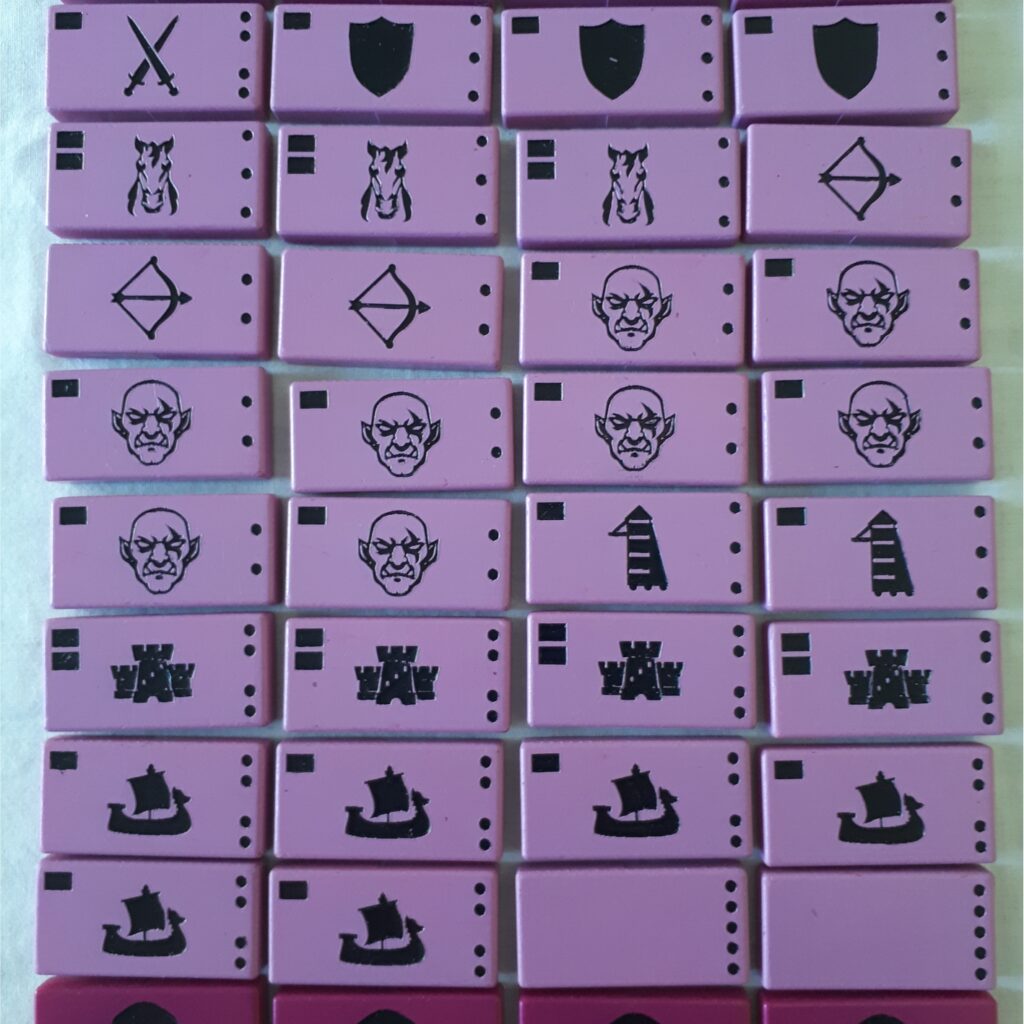
Gamefound Preview is now Live!
I’m sure you’re following us everywhere so you probably already know this, however just in case this is our primary source of contact, I wanted to let you know that I have launched the Gamefound preview page. You’ll be able to follow the campaign, share your feedback and over course, Instaback when we go live.
Looking forward to seeing you there!
Designer Diary: Part Three – And now, on the other side of the World.
My life was in a state of flux back then. Julia had fallen in love with Australia after our first visit in 2009 and convinced me that we should emigrate. That proved harder than we had thought, as we were already nearing fifty. Julia then suggested New Zealand, as if you could gain residency there then you could then go to live in Australia. Please note this is no longer true, as the Australian government got tired of various folks coming in that way. The rule now is you have to be a citizen, and even then you do not get the same rights as an Australian citizen. Anyway, I digress. I had not started on the physical design of the game but knew that it would have 20mm by 40mm tiles. Therefore, before leaving for the distant land of Aotearoa, I ordered a few thousand wooden tiles from my supplier, DETOA. Back then I was publishing games through Treefrog, which meant lots of wooden pieces. DETOA is a Czech company that makes some of the best wooden pieces around and I used them for all of the Treefrog games.
‘Bloodstones’ was one of the first projects I started on once we reached NZ. We had washed up in Coromandel Town, which is on the Coromandel peninsula. It’s a breathtakingly beautiful part of the world, but without many gamers around. The core mechanic of Bloodstones came from another game I was working on back then, which ended up being published as ‘Lincoln’. In this game you have to permanently discard cards to build units, which I think of as a deck-destruction game. ‘Bloodstones’ has a similar vibe except that everything is simpler, as building a unit means taking one of your tiles and placing it on the map, thus removing it from your ‘deck’ cycle. I wanted each player to have a different set of tiles, creating a nice asymmetry. Hence the fantasy theme. I could not think of a historical period which would be suitable for such a multi-player wargame. The lure of fantasy is that you can do whatever you want. You want dragons, not a problem sir, how many would you like?
You cannot design a game in isolation. At some point you need other people to sit down and play with. As mentioned, Coromandel Town was not crawling with gamers, so I started a club to see who I could entice into the world of gaming. I got the word out and a small group of locals came down to the local church hall to see what these new-fangled games looked like. I started them on the easy stuff like ‘Bluff’ and ‘Ticket to Ride’. Then once I had drawn them in I hit them with the first playtest. I could see that the game was going to work from that first game, but that my dream of the ultimate ‘clean’ game was going to get a little muddier. I needed some way to mark control of areas, so I had to add control markers to the mix of tiles, which became villages.
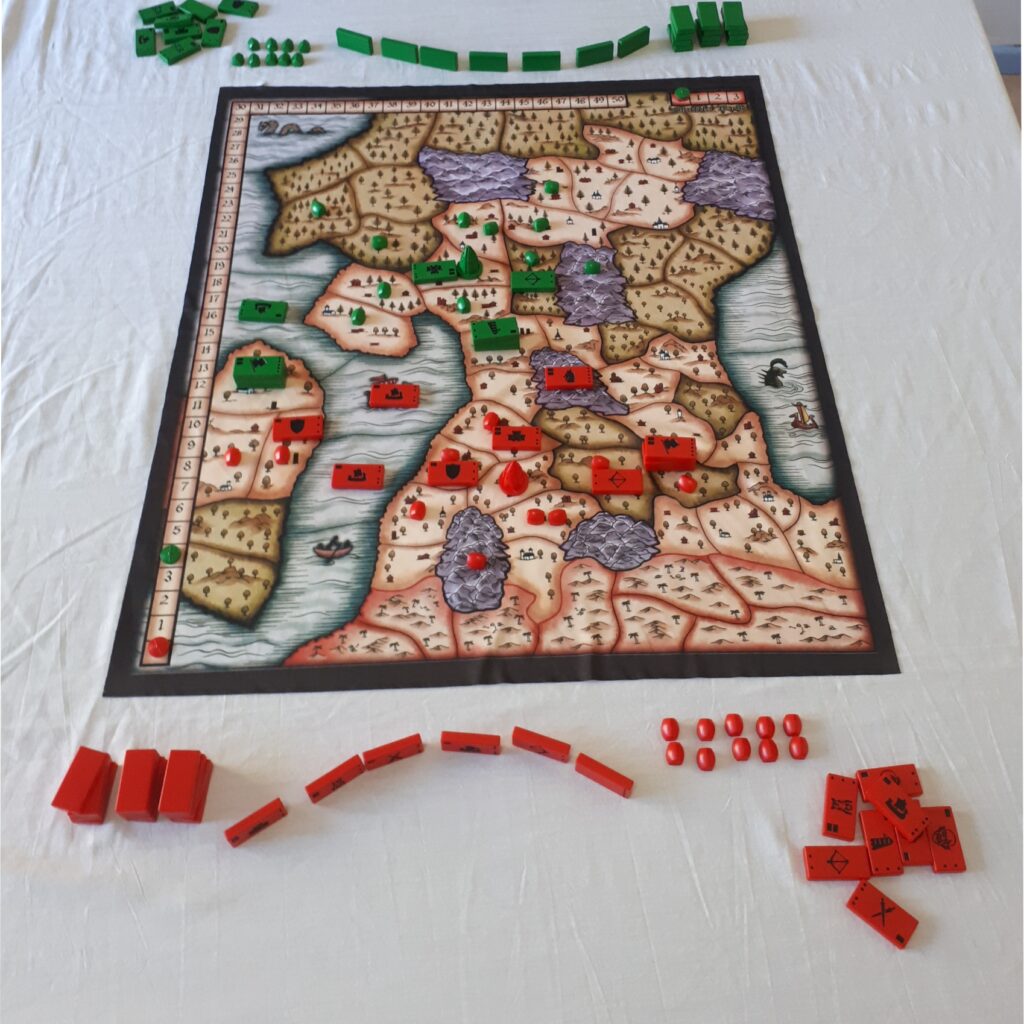
Designer Diary – Part Two: The Genesis of Bloodstones
I’ve taken part in many interviews and talks on the process of game design. I’ve said many times that I always start with a theme and then work out the mechanics. Well, what’s the point of having principles if you cannot break them. ‘Bloodstones’ started as a mechanic in search of a theme, which is why it ended up with a fantasy setting. What would we do without fantasy, if it didn’t exist somebody would have to make it up.
I remember clearly the genesis of the idea that became ‘Bloodstones’. This was around twelve years ago when I was still living in the UK. While at my local games club I observed a group setting up the latest Fantasy Flight big mega-production. It was a large box filled with lots of different components: plastic figures, cards, dials, dice, chits, counters, and so on, and on… It struck me that the mere presence of so many different types of things was in itself a barrier to learning the game. It also offended my design sensibilities, it seemed to me a game that had been engineered rather than designed. At that moment in time I resolved to design the anti-FFG game, a game with the fewest possible types of components but with deep, satisfying game play.
I think of my mind as my office. That’s where I go to work. Before setting down ideas on paper I work out as much detail as possible in my head. I’ve been doing this for so long now that I probably have changed the shape of my brain. It’s certainly got to the point where I dream about designing games, including playtesting what I’ve designed in the dream. This means I can be at work while on holiday, and I do remember doing a lot of thinking on this project while on a RV journey from Denver to San Francisco.
A quick diversion here. I know two people with degrees in geography and neither of them can read a map. One of these people is my better half, Julia. I had been invited to a convention in San Francisco. Julia had recently made an online friend in Denver who was helping promote our games. As they are both in America Julia figured they were close to each other and we could take in both cities. I tried to explain they were not that close, hence why we ended up in a RV and taking around three weeks to get to SF.
But back to the game. I knew I wanted plastic tiles. I thought domino-style pieces would look good and have the functionality I was looking for. They are really mini-cards that you can stand on their side. They have enough surface area to represent a reasonable amount of information. I wanted all of the components to be the same shape, so that all you have to play with were tiles. This proved impossible, but we are not at that point in the story yet.
:strip_icc()/pic6960068.jpg)
Designer Diary – Part One: What is Bloodstones?
This is my first designer diary. I’m not someone who enjoys the process of writing, especially about myself. However, as Bloodstones is due to launch on Gamefound soon I thought it might be helpful to explain something of the background of this game and the part it has played in my personal journey.
When I started writing this I thought it would be just a few pages, then it turned into War and Peace. Thus I have broken the diary into parts with clear headings. Just warning you, so you know what’s to come. ‘Bloodstones’ has had the longest, most tortuous path to publication of any of my designs, and one that I would prefer not to repeat. Therefore it may be of interest to some of you as a cautionary tale.
WHAT IS ‘BLOODSTONES’?
‘Bloodstones’ is a fantasy wargame with 4-6 asymmetric factions.
Your aim is to score the most points, which come from having villages on the map, winning battles, and capturing villages and citadels.
The tiles form the core of the system. Each tile has three pieces of information on it: the cost of building the tile (which varies from zero to two), the unit type, i.e. sword, cavalry, dragon etc, and the ‘pip’ value (going from two to five). The tiles are multi-use and while in your hand they can be used for various purposes. You are constantly faced with difficult decisions of what to build and what to discard. Combat also makes use of a different tile set.
Rather than going into a lot of detail about the gameplay here, you can download the rules from our website.

LAUNCHING WALLACE DESIGNS
Martin Wallace is proud to announce the launch of his new company, ‘Wallace Designs’
The first release will be ‘Bloodstones’, a multi-player fantasy wargame. This be presented on Gamefound in late July. The game will only be available via the Gamefound platform and a small number of outlets. It will not be sold to distributors.
The physical presentation of ‘Bloodstones’ sets it apart from the many other games on the market, with the components being mostly plastic tiles and the maps printed on faux silk.
‘My intention is to create a game with simple components but still with deep game play’.
‘Bloodstones’ will be the first of a line of games that will explore different ways of presenting games, moving away from cards and chits to solid cast pieces. They will also be short-run speciality items.
Martin has gathered a team of associates in Australia to help him with this endeavour. The Gamefound campaign will be run by Cassie Simpson. Artwork and graphics have been produced by Leith Walton and Atticus McNaughton. Iain Anderson has created the digital videos. Cassie and Alexai Menardo have produced a TTS version and Patryk Wolowiec is developing a version for BGA.

